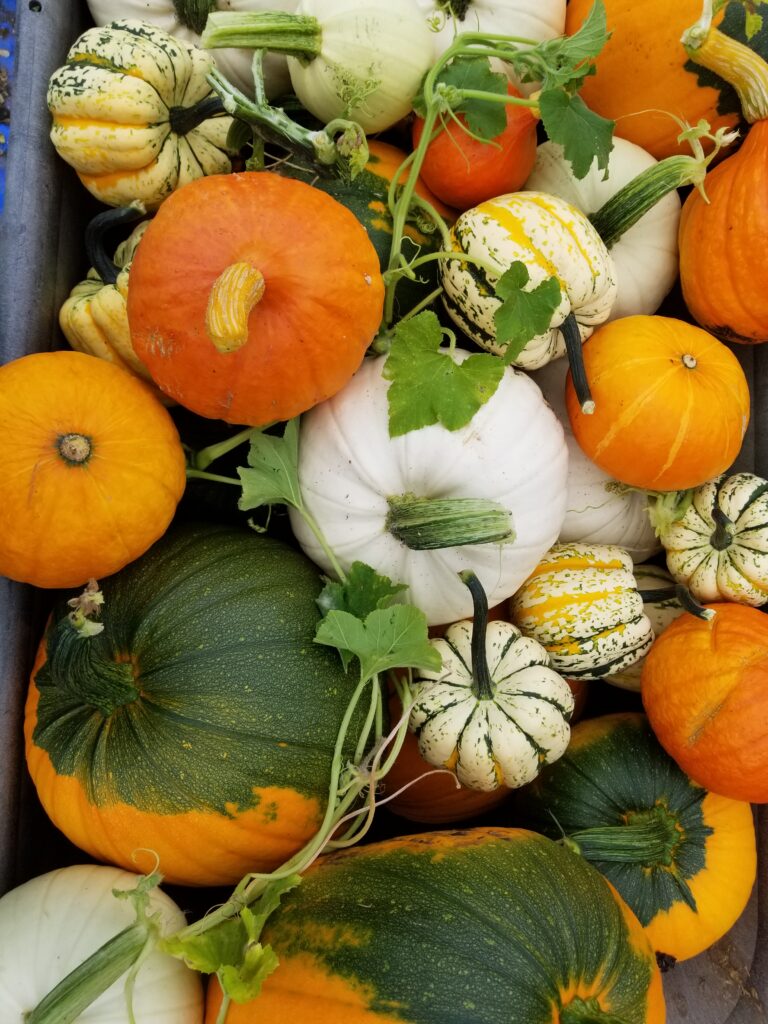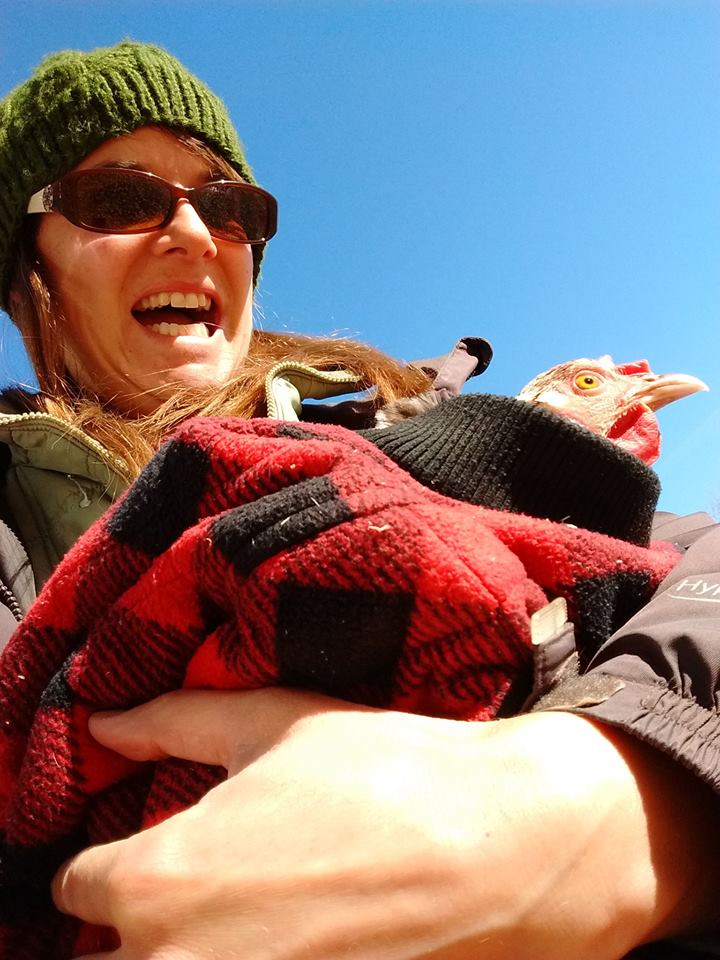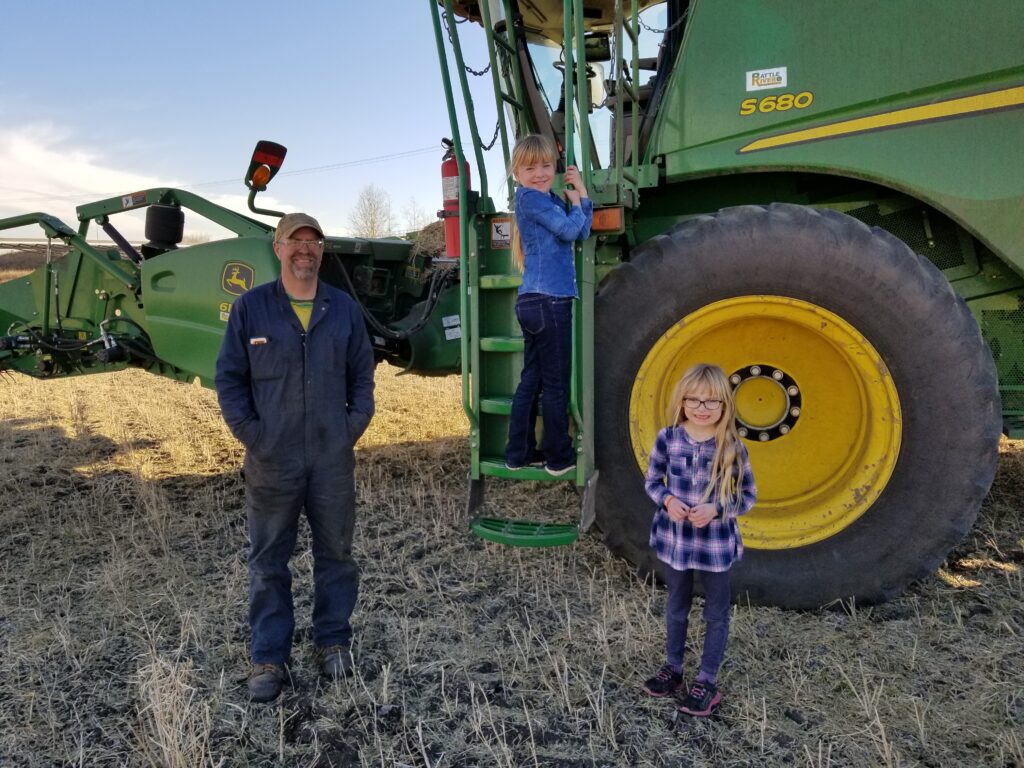 Sustaining one of Alberta’s oldest homestead farms through no-till agriculture. Colin and Laura Jackson are fourth-generation commercial grain and seed farmers. They also raise honeybees and provide a free-range refuge for ‘rescued’ chickens
Sustaining one of Alberta’s oldest homestead farms through no-till agriculture. Colin and Laura Jackson are fourth-generation commercial grain and seed farmers. They also raise honeybees and provide a free-range refuge for ‘rescued’ chickens
By Trina Moyles
As a fourth generation grain and pulse farmer in Strathcona County, Colin Jackson has seen many changes to the way food is grown on the Canadian prairies. He grew up on the very land he stewards today with his wife, Laura, and their family. They run Jackson Homesteaders Farms Ltd., a multi-enterprise farm that resides on 180-acres of land, located north of Sherwood Park, Alberta. The farm is located on Treaty 6, traditional territories of the Cree, Saulteaux, Siksikaitsitapi (Blackfoot), Métis, and Nakota Sioux. The Jacksons farm around 5000 acres (owned and rented) of grain and pulse production, manage a horse boarding operation, tend honeybee hives, run a community garden and care for a huge flock of ‘rescued’ chickens and ducks. Their farm is situated on the same land where Colin’s great grandfather, Thomas Jackson, put down roots and built a sod house in 1881.“The original well-site for the sod house is still at the back of the pasture,” says Colin. “It’s kind of a neat reminder of bygone era.” The farm is considered one of the oldest working homesteads in Alberta’s settler farming history. Like many early homesteaders, Thomas Jackson and his wife Margaret were “survivalists” on a quarter-section plot, growing oats, raising livestock, and tending a huge homesteading garden to feed their family.In the 1970s, Colin’s parents, Richard and Reta, founded Jackson Homesteaders Farms. Alongside grain and pulse production, Colin’s mother managed a horse breeding and boarding operation. She was passionate about breeding Polish and desert-bred Arabian horses, and several of the horses she raised would go on to become national endurance racing champions. Colin took over management of his family’s farm in 1997, the same year he and Laura were married. Laura, who studied conservation biology at the University of Alberta, has always had a passion for working with animals and nature. Today, she’s pursuing her Master’s of Science in Forest Ecology. “It’s pretty neat how a piece of land can evolve,” remarks Colin. “The farm has changed over the years to support different activities.”
And the land surrounding the farm has changed, too, with the city expanding and edging closer to agricultural lands in Strathcona County. Today, one of the Jackson’s fields comes right up to the curb side in Sherwood Park. “As a young child, we were a long way’s away from curb streets,” says Colin. Today, they’re minutes away from a Tim Horton’s and other developments. Many of the Jackson’s farming neighbours have sold land for residential, or industrial development. Currently, soil is being moved to make way for the 4000 residential houses across the road from their farm.“There is so much history in this area, both with the Indigenous people and then with agriculture,” says Colin. “And now, we all need to change how we do things in order to adapt to the encroaching cities.”
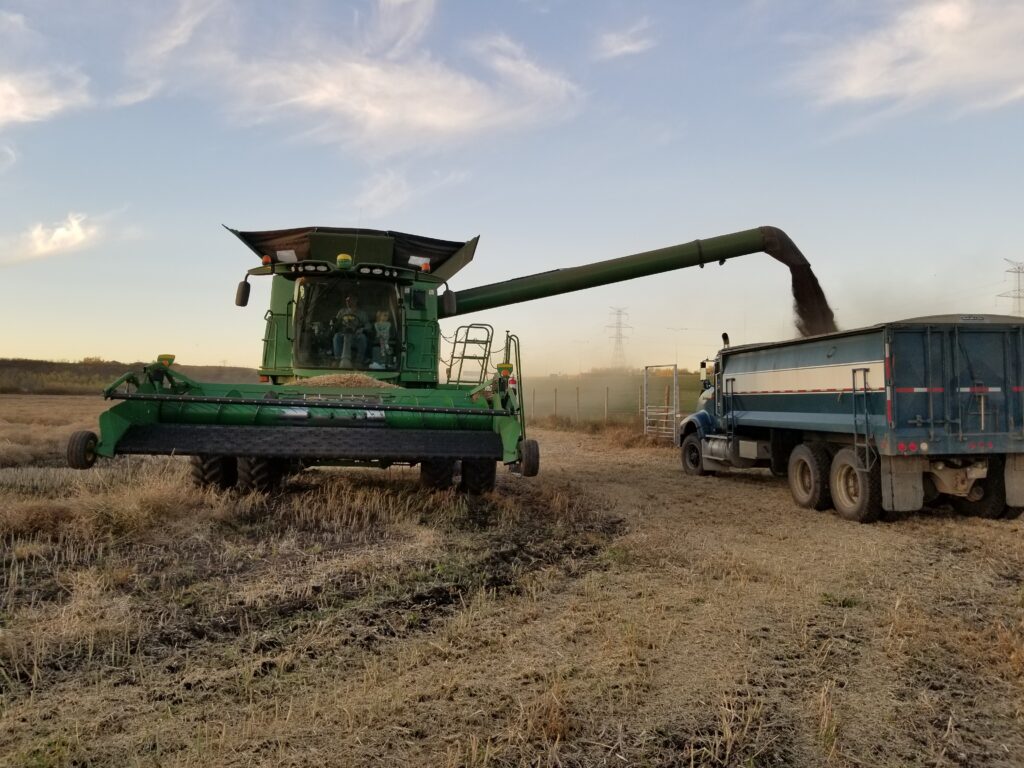 A Culture of Change — Transitioning into No-Till Agriculture
A Culture of Change — Transitioning into No-Till Agriculture
The Jacksons have seen many changes in methods of grain production over the years. The standard practice, for many decades, was to till the field under after a harvest. Colin remembers being a boy and seeing the exposed black soil and the “perfect rows of green” as the crops came up. It was standard practice for farmers to till their fields in the fall and spring before planting.
In the mid 1990s, the Jackson family adopted no-till, or ‘zero tillage’, agriculture, acquiring a “no-till drill” that would direct seed into the soil without disturbance. No-till may also be called ‘direct drilling’. The most primitive example of ‘no-till drilling’ was practiced by Indigenous farmers by simply using a stick and planting seeds by hand. Mechanized versions of ‘no-till’ began to be developed post-WWI and became more common in North America in the 80s and 90s.
“In the Midwest, no-till has become the de facto way to farm,” explains Laura, “But when Colin’s dad first bought the no-till drill in the mid 90s, farmers around here looked at them like they were crazy. They didn’t see a black tilled field, but these ugly fields of stubble.”
“The very first spring we were planting,” Colin chimes in, “We had a number of neighbours concerned that we hadn’t seeded. They asked us, ‘Are you guys okay? Is there a problem in the family?’”
It took a few seasons, but neighbours saw for themselves: no-till agriculture prevented soil erosion, run-off, and compaction of the soil structure. Today it has become standard practice.
“It’s very hard on your soil structure, driving over it and ripping it up,” explains Laura. “[Tillage] can be damaging to the soil and the microorganisms that live in the soil.”
By leaving the stubble in the field after harvest, snow catches in the stubble, traps moisture, and supports the growth of soil bacteria and microorganisms. No-till reduces erosion, protects the delicate soil structure and, in turn, keeps moisture in the ground. On the flip side, farmers have to deal with more weeds, points out Laura, but the overall benefits of no-till outweighs the issue of dealing with weeds. No-till significantly reduces a farmer’s carbon footprint by leaving nitrous oxide — released through tillage — in the soil.“When you till, you expose the microbiome to drying winds and UV light, which leads to erosion,” Laura explains. “The microbial activity — bugs, bacteria, earthworms, soil mites — was much healthier once we stopped tilling.” Sometimes change can take time to root in people’s minds, let alone in the fields, but change is a constant force in agriculture, says Colin. It’s not about changing practices, so much as “perspective”. “When I was a kid, we’d look for those perfectly straight rows coming up. Later in the 90s, we turned to the no-till drill,” he explains. “And today, technology has replaced the drill with more advanced discs.”
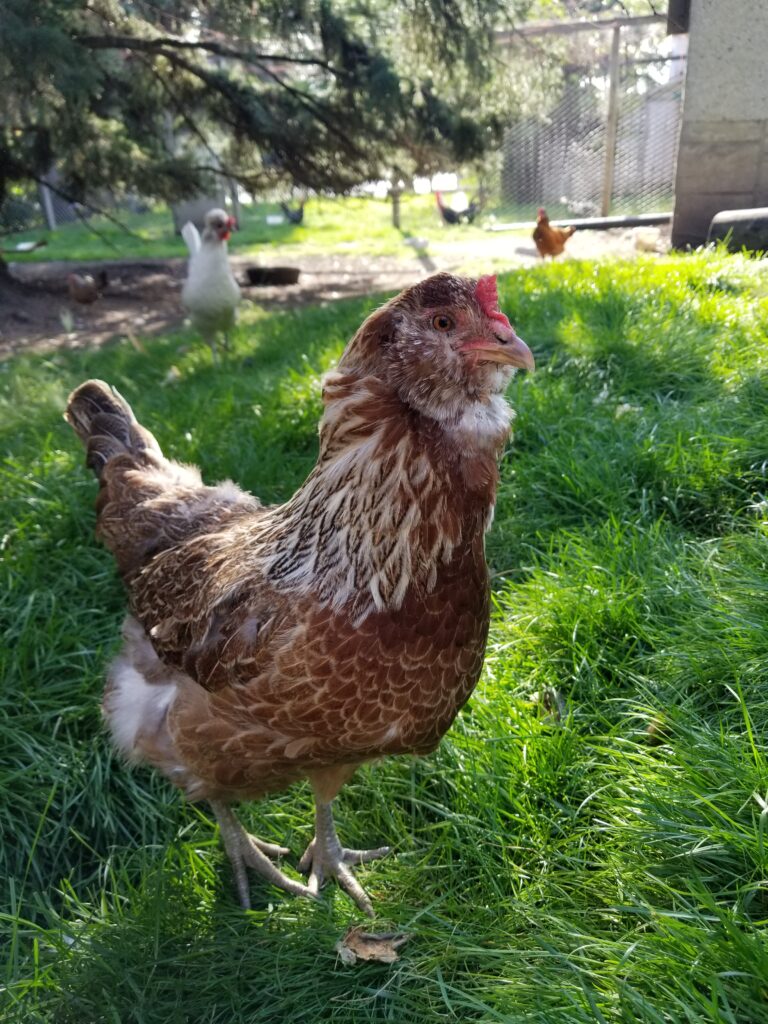
Creating a Refuge For ‘Rescued Chickens’
Another aspect that makes the Jackson farm unique is the way they raise chickens. Laura manages a chicken rescue operation, taking in chickens from the SPCA, or abandoned urban hens found wandering downtown. She has a flock of 50 laying hens, and takes in roosters as well. Laura fell in love with chickens when she came to the farm in the late 1990s. She began experimenting with raising different varieties of heritage birds.“I started to learn more about commercial meat bird and egg production and kind of developed a bad taste in my mouth for how these awesome little intelligent, hilarious birds were treated,” she says. “Chickens are often kept in relatively deplorable conditions when they’re being raised for production.”
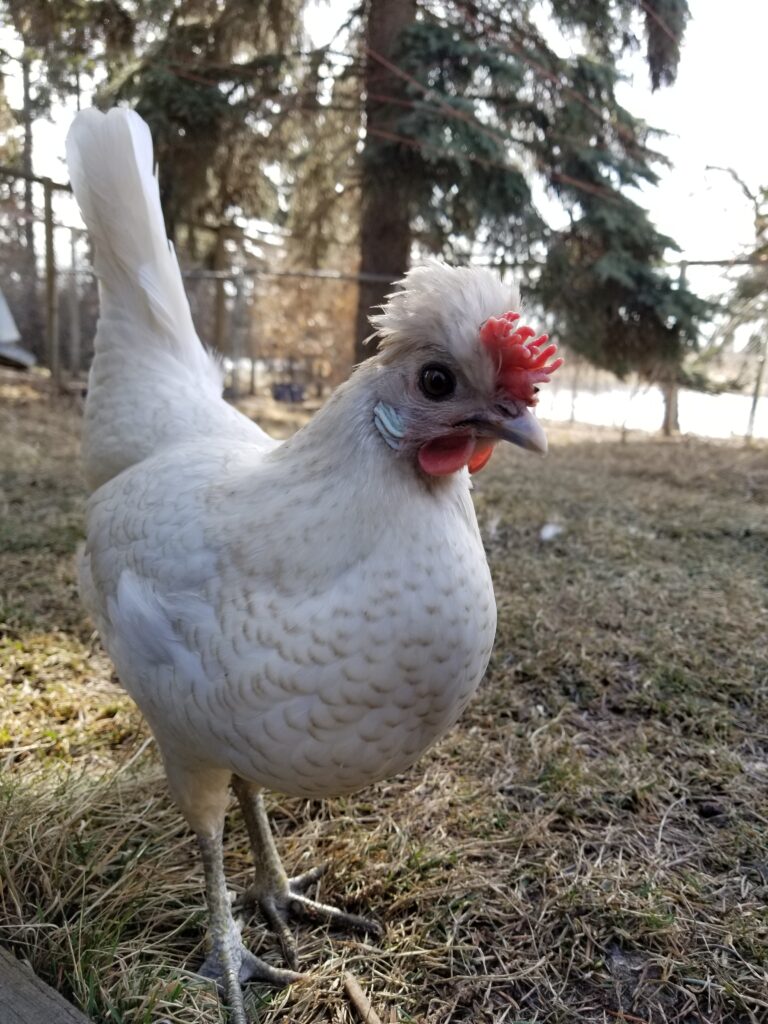 Laura’s neighbour and friend, who raises large numbers of well-cared for broiler chickens, picks out the smaller birds and brings them to her before taking the others for processing. She raises them in a huge chicken run, so that they can live out their natural lives. She’s also rescued chickens from the SPCA, including one that was found in a plastic grocery bag on the LRT in Edmonton, whom she called “Groceries”. Her oldest bird was 14-years old when he died.
“Most people think a chicken reaches the natural end of life when it’s shipped out for slaughter, but in fact, that’s not true at all,” says Laura. “Chickens are usually shipped for slaughter at only 40 days. They’re not quite 6 weeks old, they’re still chicks. They still have blue eyes, their eyes haven’t changed colour yet.”
Two of her oldest hens are turning 11 years old this year — “Monique and Louise”.
“They’re best buddies,” she laughs. “They go everywhere together.”
Laura’s neighbour and friend, who raises large numbers of well-cared for broiler chickens, picks out the smaller birds and brings them to her before taking the others for processing. She raises them in a huge chicken run, so that they can live out their natural lives. She’s also rescued chickens from the SPCA, including one that was found in a plastic grocery bag on the LRT in Edmonton, whom she called “Groceries”. Her oldest bird was 14-years old when he died.
“Most people think a chicken reaches the natural end of life when it’s shipped out for slaughter, but in fact, that’s not true at all,” says Laura. “Chickens are usually shipped for slaughter at only 40 days. They’re not quite 6 weeks old, they’re still chicks. They still have blue eyes, their eyes haven’t changed colour yet.”
Two of her oldest hens are turning 11 years old this year — “Monique and Louise”.
“They’re best buddies,” she laughs. “They go everywhere together.”
Laura has come to love their unique and individual personalities. One of the family’s hens, a house chicken named SpazzE, has become quite famous at pet friendly stores in Sherwood Park, including Michael’s and Canadian Tire. Laura sells some of the eggs, but is focused more on providing a quality of life for the birds than on production.
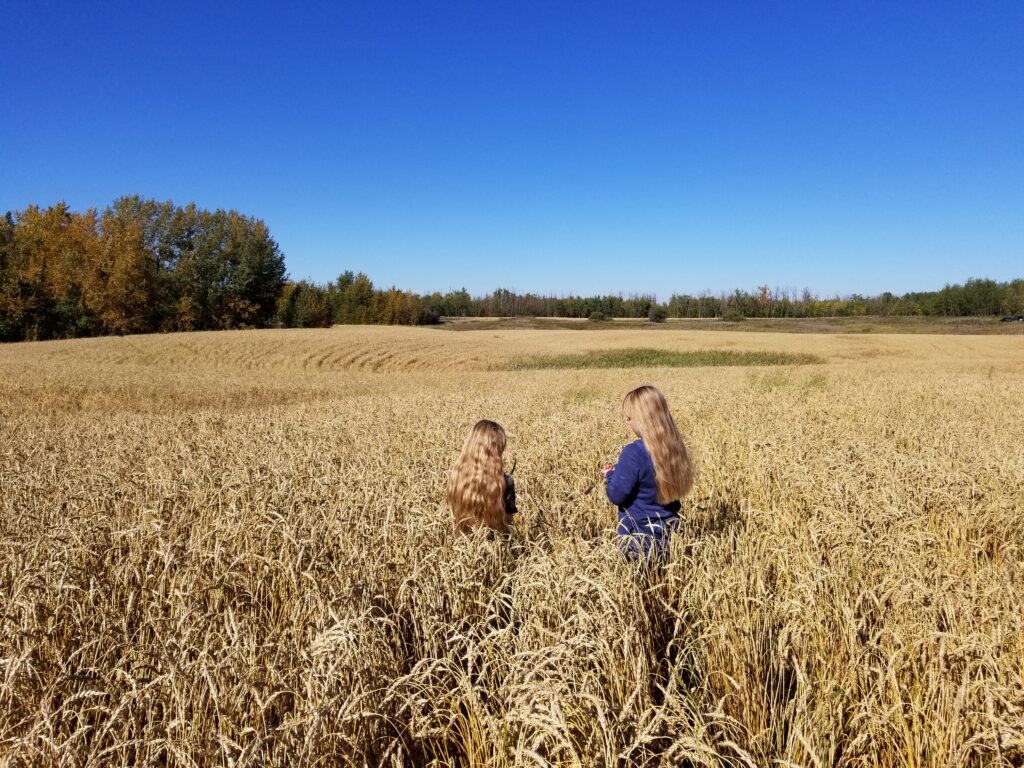 Farming for the Future — Adapting to a Changing Climate
Farming for the Future — Adapting to a Changing Climate
The Jacksons, like many grain and pulse farmers in Alberta, have seen increasingly hot, dry, or on the contrary, wet growing conditions in the recent years.
Laura cites the importance of maintaining healthy soil and practicing no-till agriculture as a way to reduce erosion, increase organic matter, and keep moisture in the soil. Integrating shelter belts and preserving some natural riparian areas on the land can also help to prevent erosion. But every farming season is a little bit different, Colin points out, and difficult to predict.
“It’s part of the fun with farming,” he says. “There’s a saying that whatever hand you’re dealt, you have to deal with as a farmer — and sometimes there’s not a lot you can do.”But reducing their carbon footprint is important to the way the Jacksons farm and they’re doing that as much as they can through no-till production. He’s hopeful that through the advancement of technology in the sector, farmers can adapt and implement low-carbon solutions. “When John Deere makes an electric tractor, I’ll be the first to try it,” he says. “I want to be a part of the solution.”
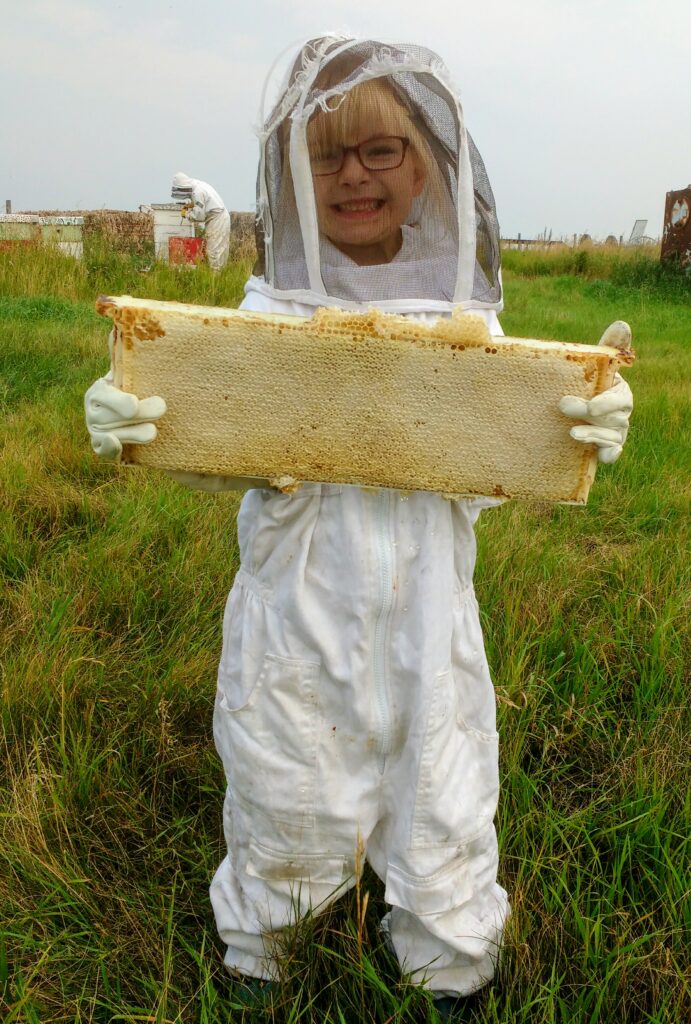 But the farmers also point out that it can be harmful to promote one way of agriculture as superior to others, citing frustrations with trends to pit organic, or regenerative agriculture against conventional production. “People don’t often understand the whole story,” says Laura. “We’re trying to do our best and grow as much food as we can in the most responsible way we can do it.”
Ultimately, every mode of production has an impact and cost. It’s important for the sector to work together as opposed to becoming more polarized and divided, say the Jacksons.
But the farmers also point out that it can be harmful to promote one way of agriculture as superior to others, citing frustrations with trends to pit organic, or regenerative agriculture against conventional production. “People don’t often understand the whole story,” says Laura. “We’re trying to do our best and grow as much food as we can in the most responsible way we can do it.”
Ultimately, every mode of production has an impact and cost. It’s important for the sector to work together as opposed to becoming more polarized and divided, say the Jacksons.
“We’re all trying to do this,” says Colin. “And one of the biggest catch phrases out there is “sustainability”. And my goodness, that word has lost its meaning. But really, if we want to continue [farming] for another hundred or thousand years, we need to get it right. I don’t think the way I’m farming is ultimately the way my grandkids are going to be farming.”As the Jackson family has observed over the past century, change is a constant and perhaps the only known that farmers can expect. “I would like to see chemicals disappear one day,” Colin says. “I hope we can get to a point where there is no longer ‘organic versus conventional food’ — there’s just growing food.” —
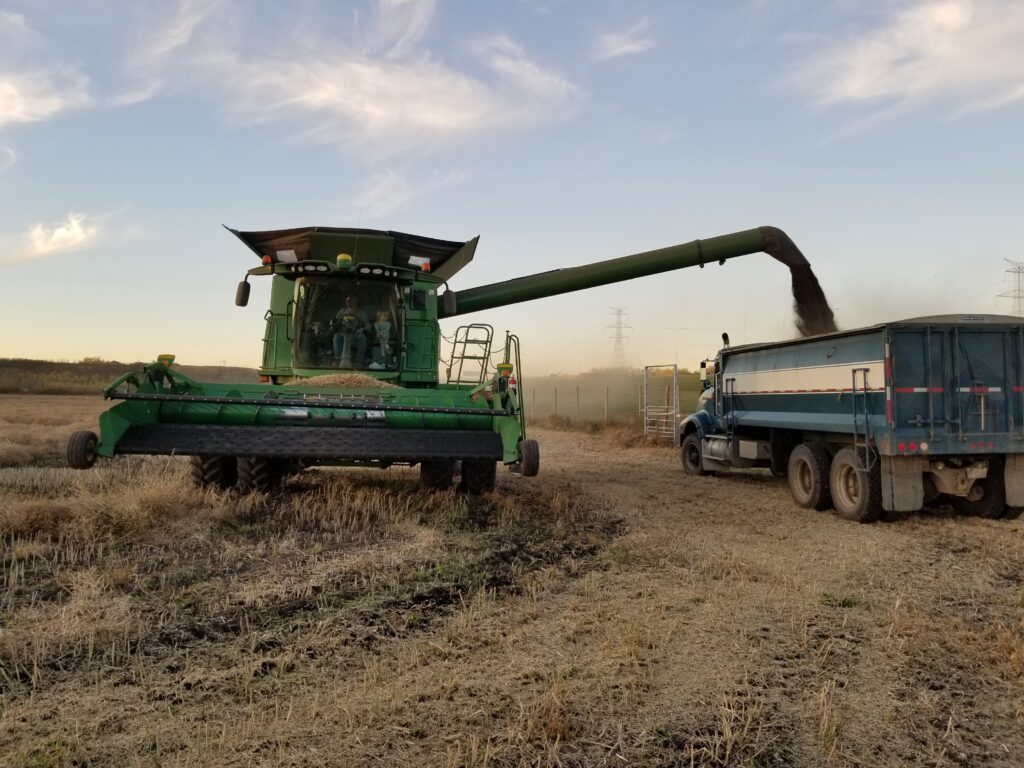
JACKSON HOMESTEADERS FARMS LTD. - STRATHCONA COUNTY, TREATY 6
Colin and Laura Jackson operate Jackson Homesteaders Farms Ltd. in Sherwood Park, Alberta. Jackson Homesteaders was established in 1881 and remains in the family today. The Jacksons practice no-till agriculture and grow commercial and pedigreed seed wheat, barley, peas and faba beans. They’ve experimented with sunchoke production and plant Radiant winter wheat for both seed and commercial grain production. Laura manages a free-range chicken rescue operation. They also keep an apiary and board horses on the farm.
Learn more about Jackson Homesteaders Ltd. – http://www.jacksonhomesteaders.ca

